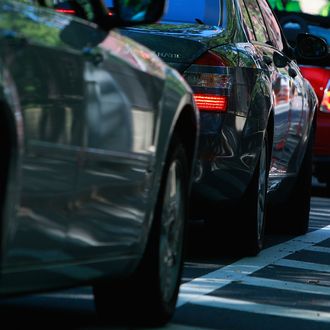
Although the data won’t blow you away, the city’s experiment with using high-tech algorithms to adjust stop lights in midtown to correspond with real-time traffic patterns has reportedly made an impact:
>Since the program was implemented in July 2011, average travel speed climbed in the zone from 6.5 mph to 7.2 mph between 8 a.m. and 8 p.m., a 10.2 percent improvement.
On Madison Avenue, the average travel speed jumped from 6.9 mph to 7.9 mph, a 14.5 percent improvement.
The program has been deemed such a success that it’s set to expand:
The zone — outfitted with microwave sensors, dozens of traffic video cameras and E-ZPass readers to monitor movement — will expand from First to Ninth avenues, bordered by 42nd and 57th streets. Previously, it included Second to Sixth avenues.





























